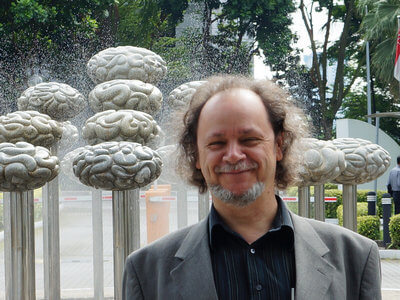Wlodzislaw Duch is the head of the Neurocognitive Laboratory in the Center of Modern Interdisciplinary Technologies, and the Neuroinformatics and Artificial Intelligence group in the University Centre of Excellence Dynamics, Mathematical Analysis and Artificial Intelligence. For many years he has been running the Department of Informatics, both at Nicolaus Copernicus University, Torun, Poland. Currently his laboratory is hosting Polish node of the International Neuroinformatics Coordination Facility (INCF). In 2014-15 he has served as a deputy minister for science and higher education in Poland, and in 2011-14 as the Vice-President for Research and ICT Infrastructure at his University. Before that he has worked as the Nanyang Visiting Professor (2010-12) in the School of Computer Engineering, Nanyang Technological University, Singapore where he also worked as a visiting professor in 2003-07. MSc (1977) in theoretical physics, Ph.D. in quantum chemistry (1980), postdoc at Univ. of Southern California, Los Angeles (1980-82), D.Sc. in applied math (1987); worked at the University of Florida; Max-Planck-Institute, Munich, Germany, Kyushu Institute of Technology, Meiji and Rikkyo University in Japan, and several other institutions. He is/was on the editorial board of IEEE TNN, CPC, NIP-LR, Journal of Mind and Behavior, and 14 other journals; was co-founder & scientific editor of the “Polish Cognitive Science” journal; for two terms has served as the President of the European Neural Networks Society executive committee (2006-2008-2011), is an active member of IEEE CIS Technical committee; International Neural Network Society Board of Governors elected him to their most prestigious College of Fellows, and elected member of the Complex Systems Committee of the Polish Academy of Arts and Letters. Expert of the European Union science programs (FP4 to Horizon 2020), member of the high-level expert group of European Institute of Innovation & Technology (EIT). He has published about 360 peer-reviewed scientific papers, has written or co-authored 5 books and co-edited 21 books, and published over 150 conference abstracts and 125 popular articles on diverse subjects. His DuchSoft company has made GhostMiner datamining software package for many years marketed by Fujitsu.
Wlodek Duch is well known for development of computational intelligence (CI) methods that facilitate understanding of data, general CI theory based on similarity evaluation and composition of transformations, meta-learning schemes that automatically discover the best model for a given data. He is working on development of neurocognitive informatics, focusing on algorithms inspired by cognitive functions, information flow in the brain, learning and neuroplasticity, understanding of attention, integrating genetic, molecular, neural and behavioral levels to understand attention deficit disorders in autism and other diseases, infant learning and toys that facilitate mental development, creativity, intuition, insight and mental imagery, geometrical theories that allow for visualization of mental events in relation to the underlying neurodynamics. He has also written several papers in the philosophy of mind, and was one of the founders of cognitive sciences in Poland. (https://www.is.umk.pl/~duch/cv/cv.html)




